United States
The world's largest market for diesel generator sets
October 2023
The United States is the world's largest market for diesel generator sets and one of the fastest growing.
What are the major drivers and how might the market develop over the next decade?
The figures are startling.
In 2022, by value the US accounted for more than 20% of the entire global market for diesel generator sets.
And from 2013 - 22, the US market had an overall CAGR of 8%, compared with a global market CAGR of 1%.
Three factors have driven this strong market performance:
Economy: overall, the US economy has performed relatively strongly over the last ten years.
Extreme weather and other natural events, particularly impacting the East Coast, Tornado Alley, Texas and California.
Demand from the data center sector.
Underpinning everything has been growing intolerance of power outages of any duration and an electricity grid which is nearing capacity and under strain.
United States Diesel Generator Set Opportunity > 6kW / 7.5 kVA
(US$ billions)
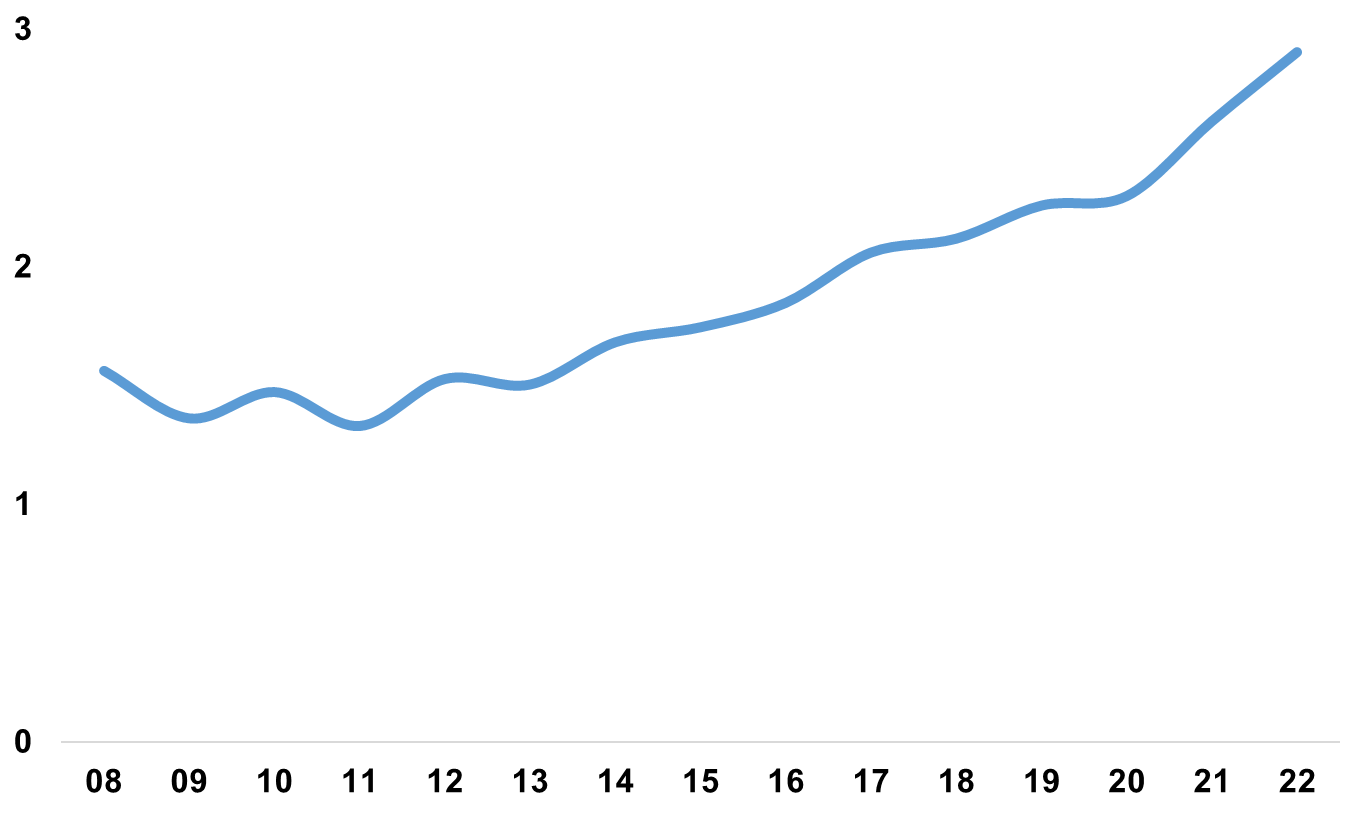
Source: Genstat from Parkinson Associates. Values based on OEM ex-works.
1. The US Economy
Despite the many shocks which the global economy has endured recently, the US economy has been relatively resilient, with CAGRs of:
5% from 2013 - 22
6% from 2018 - 22
10% from 2020 - 22
From 2018 - 22, the economy has been growing faster (6%) than from 2013 - 18 (4%), with much of that growth coming from industries which impact positively on the market for generator sets.
United States GDP (US$ trillions)
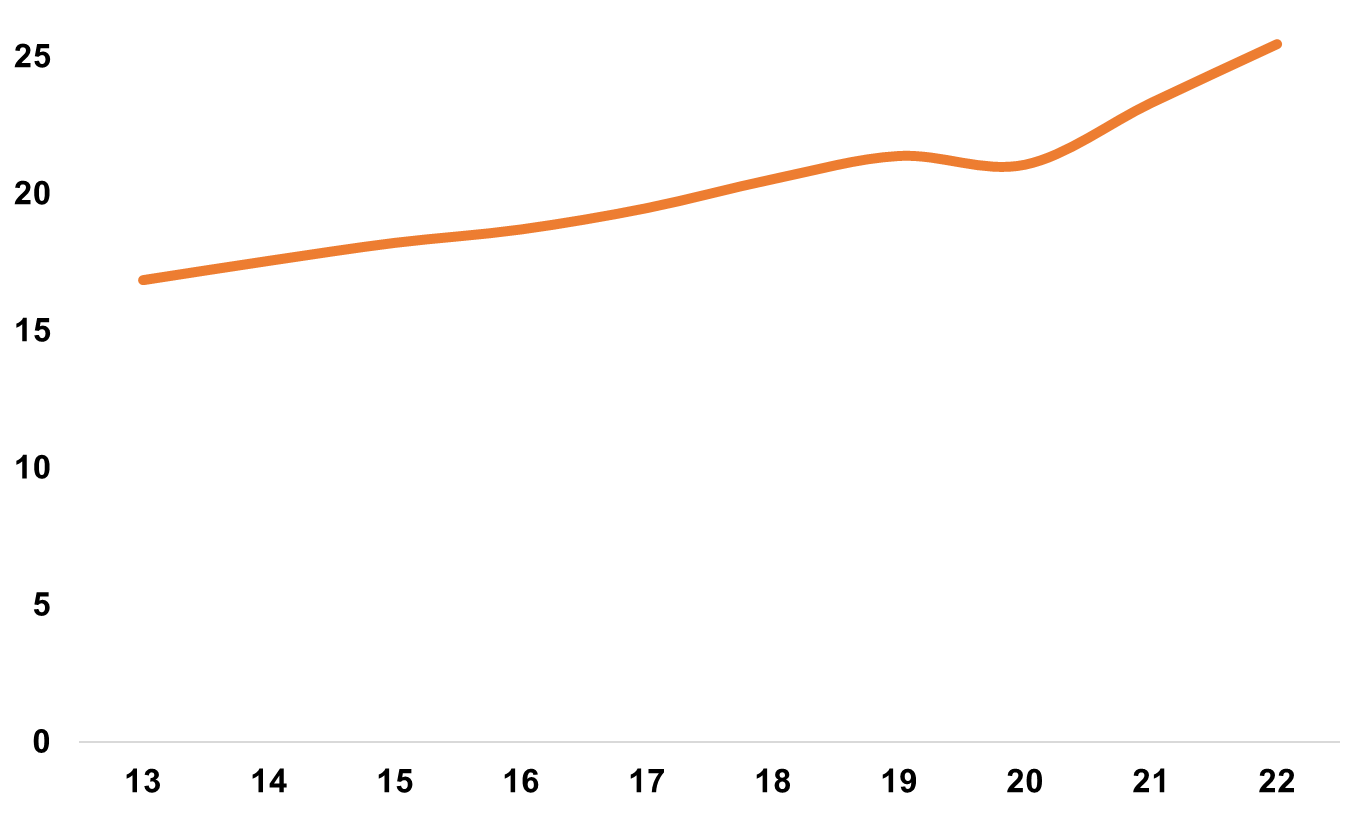
Source: World Bank National Accounts data, and OECD National Accounts data files.
2. Extreme Weather and Other Natural Events
As a large land mass covering a wide geographic area, the United States sees a significant amount of extreme weather. The intensity and duration of weather events, plus the risk of lengthy power outages have created growing opportunities for generator sets, as well as for emergency rentals.
At a country-wide level, a typical North American customer sees power outages of less than 10 hours a year, but areas including parts of the East and Gulf coasts, Midwest and increasingly now California are at higher risk.
Although in global terms, the risk of power outages in the US is very low, in practice tolerance of power outages has decreased substantially over the last 5 - 10 years, particularly with more remote working and as the digital world becomes more embedded in daily life. More businesses and homeowners are prepared to invest in a source of standby power.
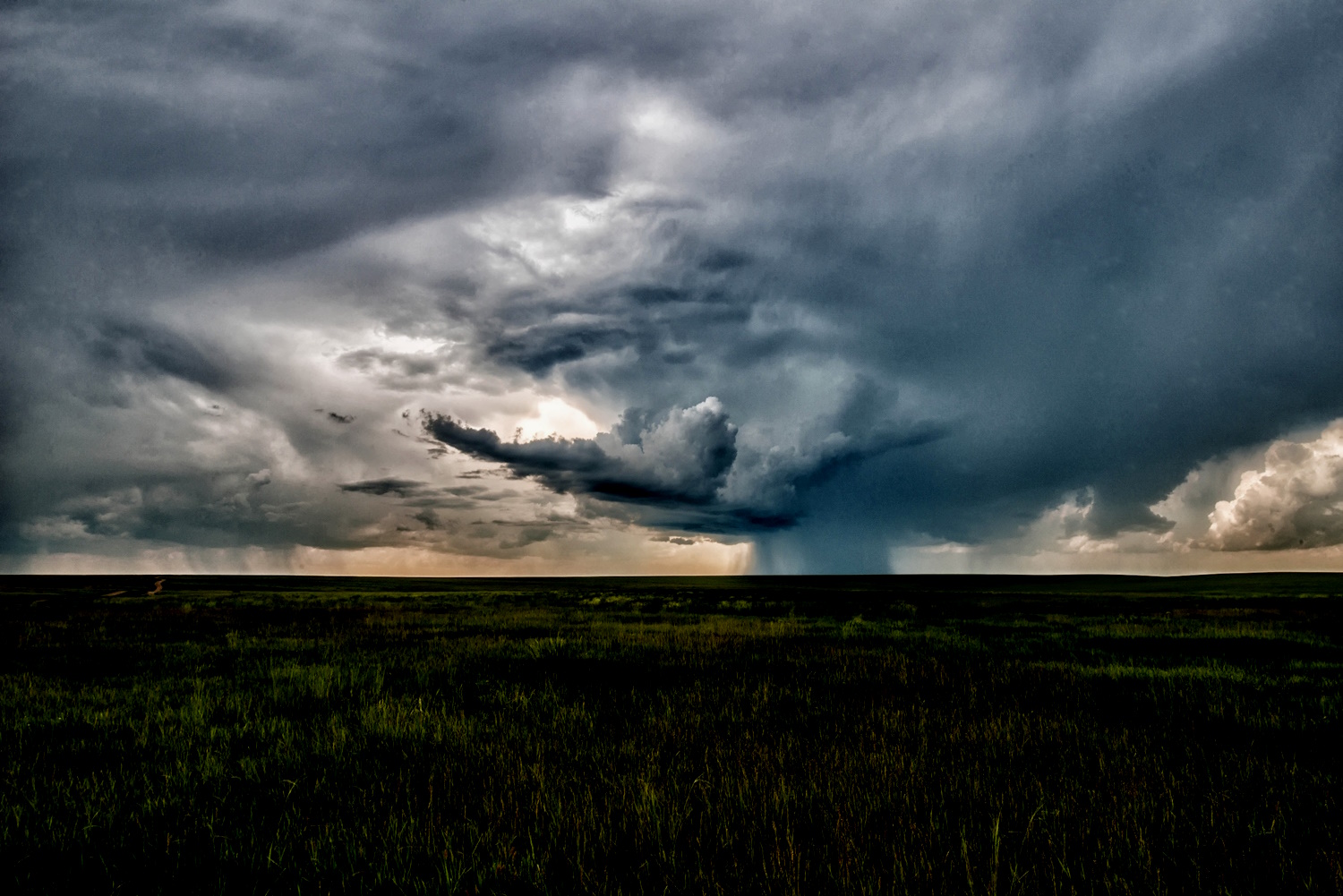
Major weather / fire / environmental events are having a growing impact on the US grid.
Electricity Outages in the United States
SAIDI (minutes of interruptions per year)
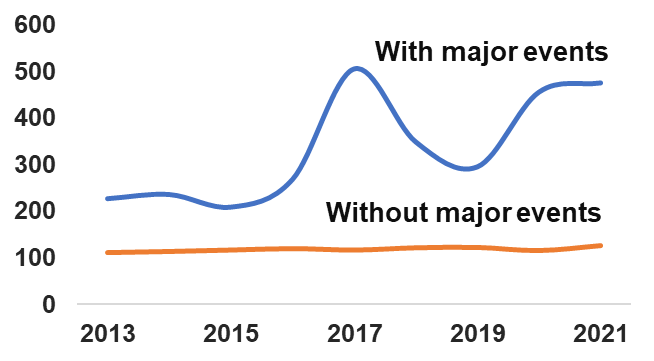
SAIDI = System Average Interruption Duration Index, minutes of interruptions, per year, that an average customer experienced.
Major events are typically weather-related or environmental.
Source: U.S. Energy Information Administration, Form EIA-861, Annual Electric Power Opportunity Report.
SAIFI (interruptions per year)
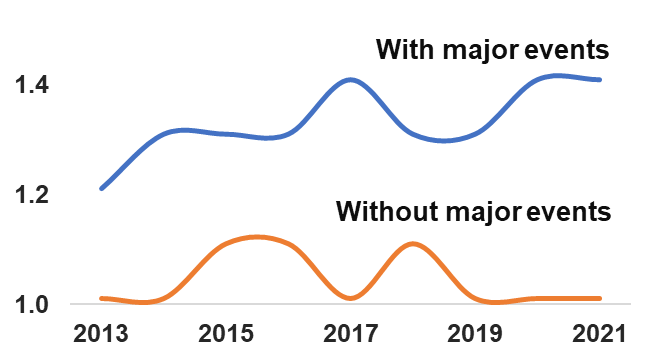
SAIFI = System Average Interruption Frequency Index, the number of electric interruptions, per year, that an average customer experienced.
Source: U.S. Energy Information Administration, Form EIA-861, Annual Electric Power Opportunity Report.
3. The Data Center Sector
The US has more data centers than any other country in the world, with facilities at more than 2,000 sites and around half of the world's 800 hyperscale data centers.
The data center business model is built on 24/7 uptime and availability at peak efficiency levels. In the US, although the overall risk of data center outages is relatively low, the consequences of downtime are severe, especially at hyperscale facilities. Avoidance of outages is therefore the highest priority.
Power is among the most common factors in data center outages and this includes failures in UPS systems, generator, switchgear or transformers connecting the facility to the grid.
Every data center site operates its own standby generator sets, with additional units in place to back up in case any fail.
Generator sets at data centers can be powered by either diesel or natural gas, but the industry has a marked preference for diesel, despite higher emissions. Often there are challenges with utility gas supply, there are more rigorous safety considerations with gas storage and typically gas generator set installations are more costly and complex. Given that generator sets at data centers will operate for only a bare minimum of time, the trade-offs for diesel are considered acceptable.
The data center sector has been a major growth driver for the US diesel generator set market and from 2018 - 22, we believe it accounts for around one third of total US market growth.
Underpinning Everything: The US Electricity Grid
The electricity grid of the United States is one of the most complex in the world: connecting 145 million customers with more than 7,300 power plants, around 640,000 miles of high-voltage power lines and millions of miles of low-voltage power lines with distribution transformers. It has been described as the “largest machine on the planet.”
Most of the network dates from the last century and much of its transmission and distribution systems were designed in the 1960s and 70s with a 50 year life expectancy. Although surplus capacity was often designed into the system, in many cases that has now been reached or surpassed.
The grid was also designed for the climate of the mid 20th century when extreme heat and storms weren't as common as they are today. Most distribution lines are above ground and vulnerable to storm damage while the lines also become less efficient in extreme heat, at the very point when demand for power typically reaches its peak. And grid transformers are also more vulnerable to failure in extreme heat.
At the same time, many renewable energy sources now connected to the grid are in relatively remote locations, far from major population centers where power is consumed.
At a time when tolerance of power outages of any kind is decreasing fast, it's no coincidence that interest in standby power is growing in the United States.
Utility assets and networks are operating for longer, in conditions they weren’t designed for.

The electricity grid in the US has been described as the largest machine on the planet
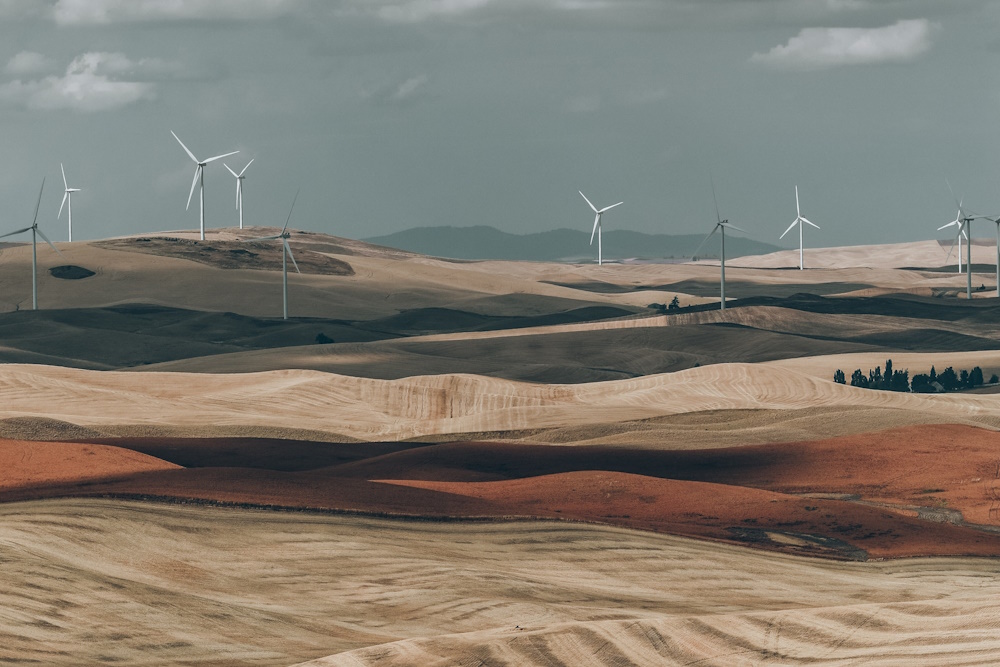
Wind turbines in Washington State. Much renewable generating capacity in the US is in remote locations, far from major population centers.
OEMs of Diesel Generator Sets in the Market
The US is an unforgiving market for OEMs of generator sets. From the outside, its sheer size and scope make it attractive but it's a difficult market for overseas players to penetrate, not just in the generator set industry but also in most other industries.
The US is probably the world's most premium market for diesel generator sets and OEMs require high levels of distribution and support capability to be taken seriously.
The market is served mainly by US manufacturers, and the big vertically-integrated players dominate. There are also smaller independent manufacturers who can carve out a very strong localized or niche presence. Some overseas OEMs have also established operations in the US.
Around 10 - 15% of the US market is accounted for by imports, mostly from Europe (mainly generator sets at higher ratings from UK and Germany) and Latin America (mainly below 375 kVA from Brazil and Mexico). Most are sold by OEMs with well-established operations and distribution in the US.
Low cost import brands have a negligible presence.
OEMs of Diesel Generator Sets in North America Market
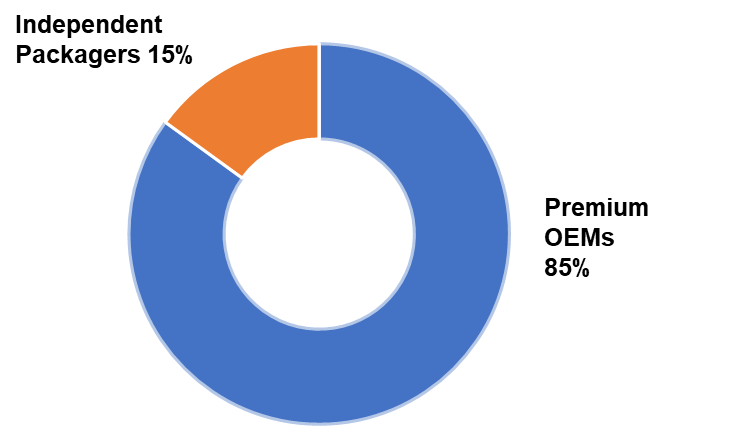
Source: Genstat+ from Parkinson Associates.
The Future
A Strong Market for Diesel Generator Sets
Over the next 5 - 10 years, we expect the US market to significantly outperform the global average, driven by economic growth and growing need for standby power. We see two standout sectors:
Rental
The US has a vibrant rental sector for diesel generator sets. Expect this to continue strongly through the rest of the 2020s, driven by overall economic growth, construction activity and power outages.
Data Centers
For the rest of the 2020s and into the 2030s, diesel generator sets will ride the wave of data center growth. Although data center operators are actively evaluating alternative ways to meet standby power needs, the sector is still some way off commercializing this and will continue to install diesel generator sets at least through this decade and probably into the 2030s. Diesel generator sets remain the most cost-effective and practical way to offset the risk of power outages.
Microgrids and Distributed Generation
Expect to see growing interest in distributed generation, from residential users right through to large businesses and utilities. For larger users, this means microgrids: currently there are more than 700 reported microgrids in the US, with generation capacities ranging from a few kW to 220 MW. Around half generate electricity from CHP, 20% from gas generator sets and around 10% have diesel generator sets. Renewables account for around 15% of microgrid generation overall, but make up 30% of microgrid generation capacity installed since 2018, and this is likely to grow.
Utilities are interested in microgrids because they are relatively more resilient during extreme storm conditions: instead of power being generated in one central location and distributed via long transmission lines, microgrids can be located near to where they are needed, and there can be many of them.
Large users of electricity, such as data centers and heavy industry, are also likely to take an interest in microgrids, either operating the microgrids themselves, or in many cases outsourcing their operation to a provider and buying the electricity. This would find some favor with grid operators as it could remove much of the power needs of larger industrial users from the grid.
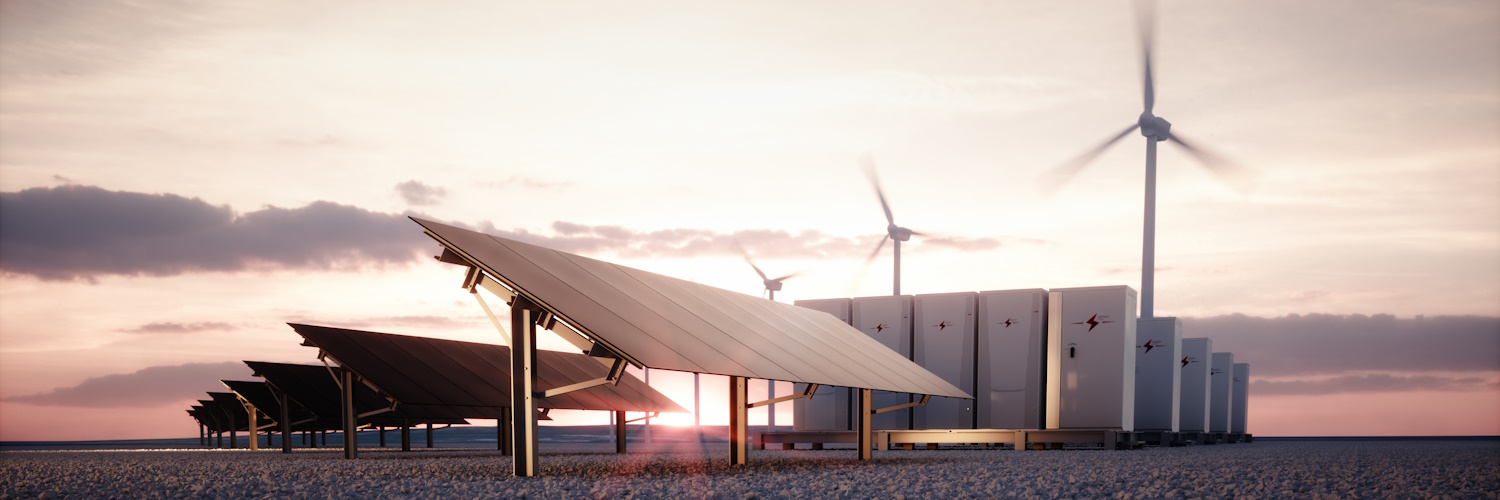
Microgrids are likely to play a bigger role in the US.
Industry Regulation
Although there is growing interest in renewable energy, in the short to medium term, it’s likely that the US will shift towards decarbonization at a slower rate than Europe. Expect regulation to progress but in a more piecemeal way, with each state taking its own course.
United States Market Forecast
Driven by all of the factors explored above, through the rest of the 2020s, it's our view that the United States will remain one of the world's fastest growing markets for diesel generator sets, particularly above 1,600kW / 2,000 kVA.
The US is likely to account for around a third of total worldwide growth in the market for diesel generator sets to 2033, with two thirds of that growth in power bands above 1,600 kW / 2,000 kVA, driven to a large extent by the data center sector.
Insights on Opportunity for Producers of Diesel Generator Sets
To find out more about this study, contact us at at enquiries@parkinsonassociates.com
Parkinson Associates publish an opportunity database, Genstat, available quarterly and annually, for diesel generator sets, split by 12 power bands for every country. Click here to find out more.
To find out more about our research in the diesel generator set industry, click here
Download this article as a pdf
